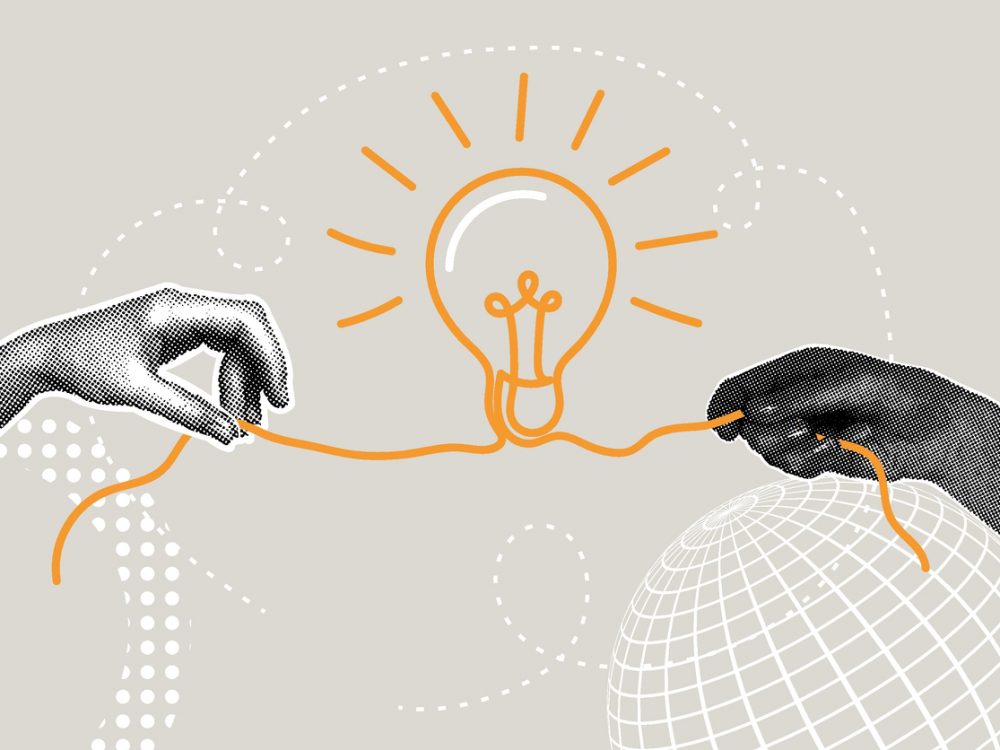Five Tips for Successful Co-Design
“Co-design” seems to be a trendy phrase used just about everywhere. Much like “the new normal,” or “fetch.” (Okay, maybe I’m a little late on that last one).
At Development Gateway, we recently wrapped up a consultation with the World Health Organization’s Partnership for Maternal and Child Health (PMNCH). We at DG are collaborating with PMNCH to make an online website that consolidates resources related to accountability for maternal, child, and adolescent health.
As part of the consultation, we wanted them to think through how the design of the website would meet stakeholder needs. To facilitate that process, we created mock-ups using Adobe Illustrator and conducted multiple feedback sessions with PMNCH stakeholders. In other words, we used co-design principles to make our final design recommendations, which are now being incorporated by the PMNCH technical team into the official website.
What are some takeaways from the project? Here are 5 tips you can use in your own co-design process.
- Tip 1: Share materials prior to the meeting
Before our first co-design session, we created and shared an e-mail packet that included a brief summary of the project as well as the mock-ups themselves. We simultaneously designed our feedback sessions so that participants could participate just as easily if they had not read the background material. We find that sharing materials before the co-design sessions – though it does require more planning – is worth it in the long run, as some people need more time to process the information and gather their thoughts. Sharing the materials beforehand allows them to feel comfortable to share their ideas in a group.
- Tip 2: Create a warm, open, collaborative atmosphere

Successful co-design relies on every participant sharing their thoughts. That is much less likely to happen – or to happen in ways that are actually helpful – if people do not feel safe, or if they feel they will get dismissed, shushed, or challenged. In other words, as the facilitators of the session, we made it a point to design a virtual environment where participants felt comfortable to speak. We did so by including an icebreaker before the “meat” of the feedback sessions. Every person, client included, was asked to share their name, location, and how they were feeling in the moment. We also helped create a safe environment by emphasizing that there are no wrong answers. We even included this picture of children (above) in our PowerPoint slideshow to remind them of a group of people who are exemplars at speaking exactly what’s on their minds.
- Tip 3: Be clear in the overall vision of the project
Have you ever been in a meeting where you are not sure what the point is, or why you are even there? Not fun, and definitely frustrating.
We wanted to avoid that as much as possible by stating why the participants were invited, what the process had been up to this point, and what they can expect going forward.
In our specific case, we held two co-design feedback sessions. In our first session, we were clear that we would consolidate all the feedback from the initial session, incorporate those comments into our mock-ups, and then reconvene in a month’s time to show our updated designs. During the second feedback session, we explicitly noted every change made as a result of comments during the prior sessions. This helped the participants understand that their comments were being taken seriously, and to know what to expect going forward.
We also had a slide that explicitly outlined where we’ve been, where we are, and where we are going.
- Tip 4: Set expectations
Because we were meeting with individuals who were new to the design process, we needed to be very clear about what they would see and why. For example, before opening the floor for comments, we discussed that participants would be reviewing black-and-white mock-ups, which was an intentional decision on our part to help focus on the overall structure, rather than how the visuals looked overall. Similarly, we shared a slide that addressed helpful vs. not helpful feedback. One example of “helpful” feedback was about general flow and functionality. An example of “unhelpful” feedback was focus on graphic elements, for example “I don’t like that logo.”
Giving Helpful Feedback
Please focus on:
- General ideas,
- How information is organized,
- Functionality, and
- Meeting the needs of the PMNCH community to access and learn about accountability resources.
Please don’t worry too much about:
- Graphic elements (which will continue to change) and
- Actual resources (are available in a separate file).
- Tip 5: Practice active listening
If you are hosting co-design sessions, you know that you have a very brief time with your stakeholders. You want to make the most of the time you have, but it is also important that your takeaways accurately reflect what the participants are saying.
One way in which we did that was through “active listening” techniques. In other words, when participants were sharing their thoughts during open feedback sessions, as the facilitator, we would occasionally jump in to validate our understanding of what was being said. For example, we might rephrase what we had heard, and then follow with, “Did we get that right?” At the end of the feedback sessions, we also summarized everything that had been discussed and asked if we missed anything. Doing so made sure that we incorporated as much as possible during the time we had together.
After we completed the final mock-up, the PMNCH team shared the website design with country teams for feedback. By completing this process, we were confident we had accurately incorporated stakeholders’ wishes. We also received strong positive feedback that the stakeholders could tell that we took their feedback seriously.
We hope this list helped you as much as it helped us in preparing for these co-design sessions. Is there anything you would add to this list? What would you modify? You can share your thoughts on social media or by e-mailing Andrea at aulrich@developmentgateway.org.
Share
Recent Posts

Shared Struggles, Shared Solutions: Education and Cross-Sector Data Use Insights
This blog draws on DG’s experience in climate, health, aid management, and agriculture to explore connections between the challenges of data collection, data hosting, and data governance across different sectors and what the solutions to overcoming them can teach us about strengthening education data systems.

Economic Toll of Tobacco-Related Diseases in Kenya: New Research Findings
Development Gateway: An IREX Venture (DG) is pleased to announce the publication of a research manuscript on the Economic Costs of Tobacco-Related Illnesses in Kenya. This research was carried out as part of the Tobacco Control Data Initiative (TCDI) activities in Kenya and is part of a broader report on Morbidity and Mortality from Tobacco Use in Kenya.

The Data Crisis Following USAID’s Withdrawal: Opportunities to Reimagine Data Systems
For decades, USAID and other US government funding supported global data systems, from health surveys and early warning tools to digital infrastructure for ministries. The abrupt termination of USAID funding has triggered twin crises: a halt to data collection and the undermining of digital systems – reveal existing inefficiencies and instabilities in how data is collected, managed, and shared both within and between countries.
